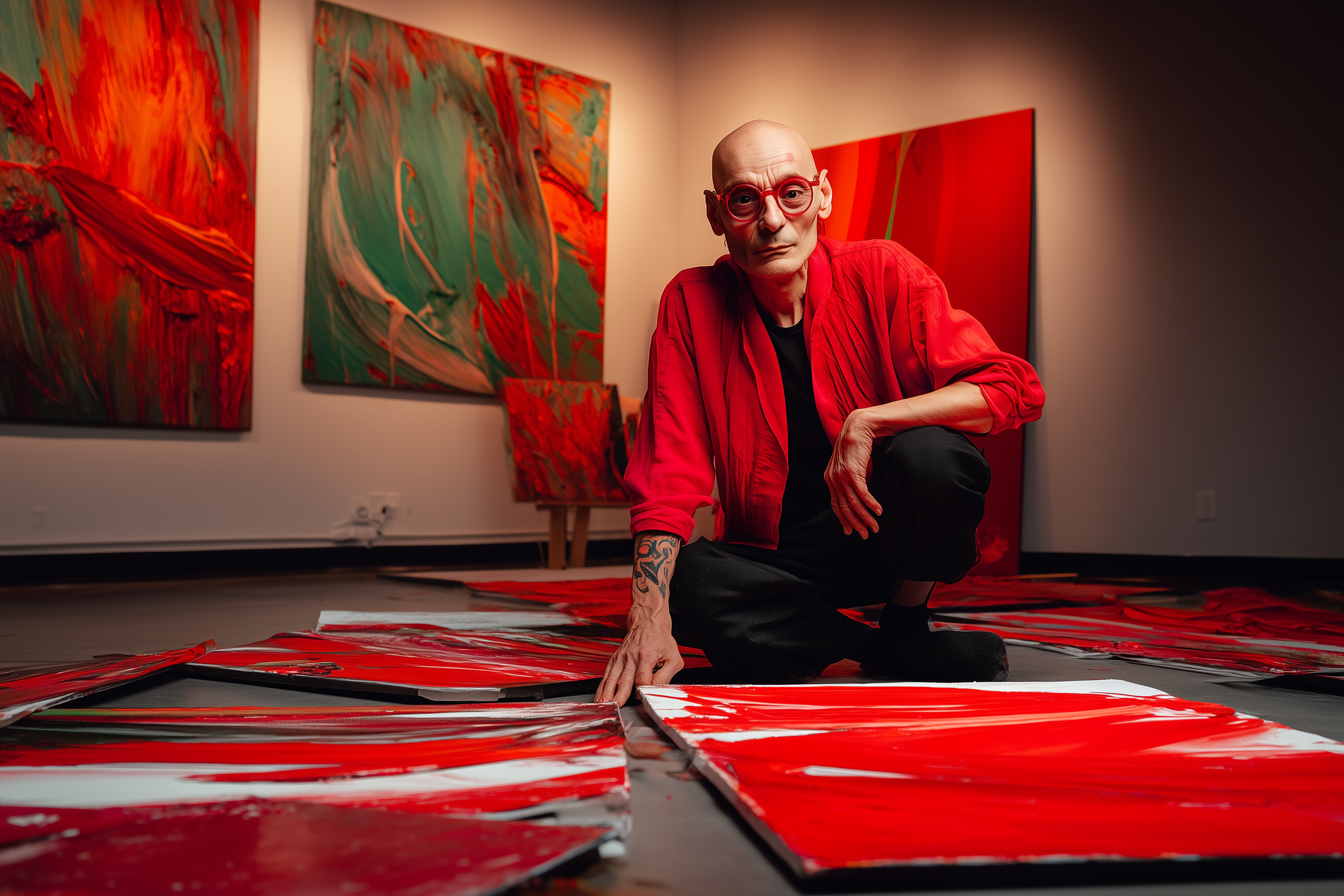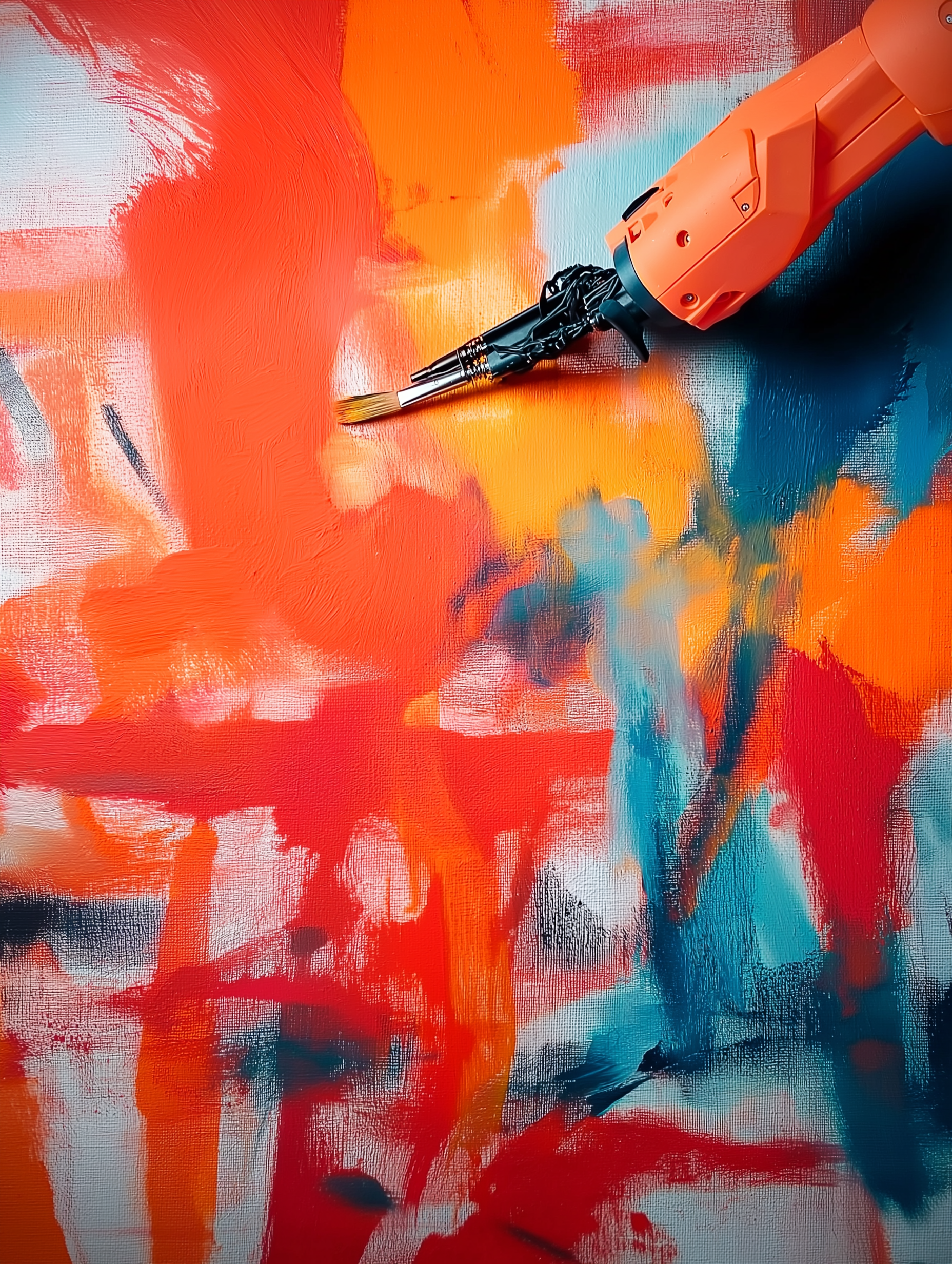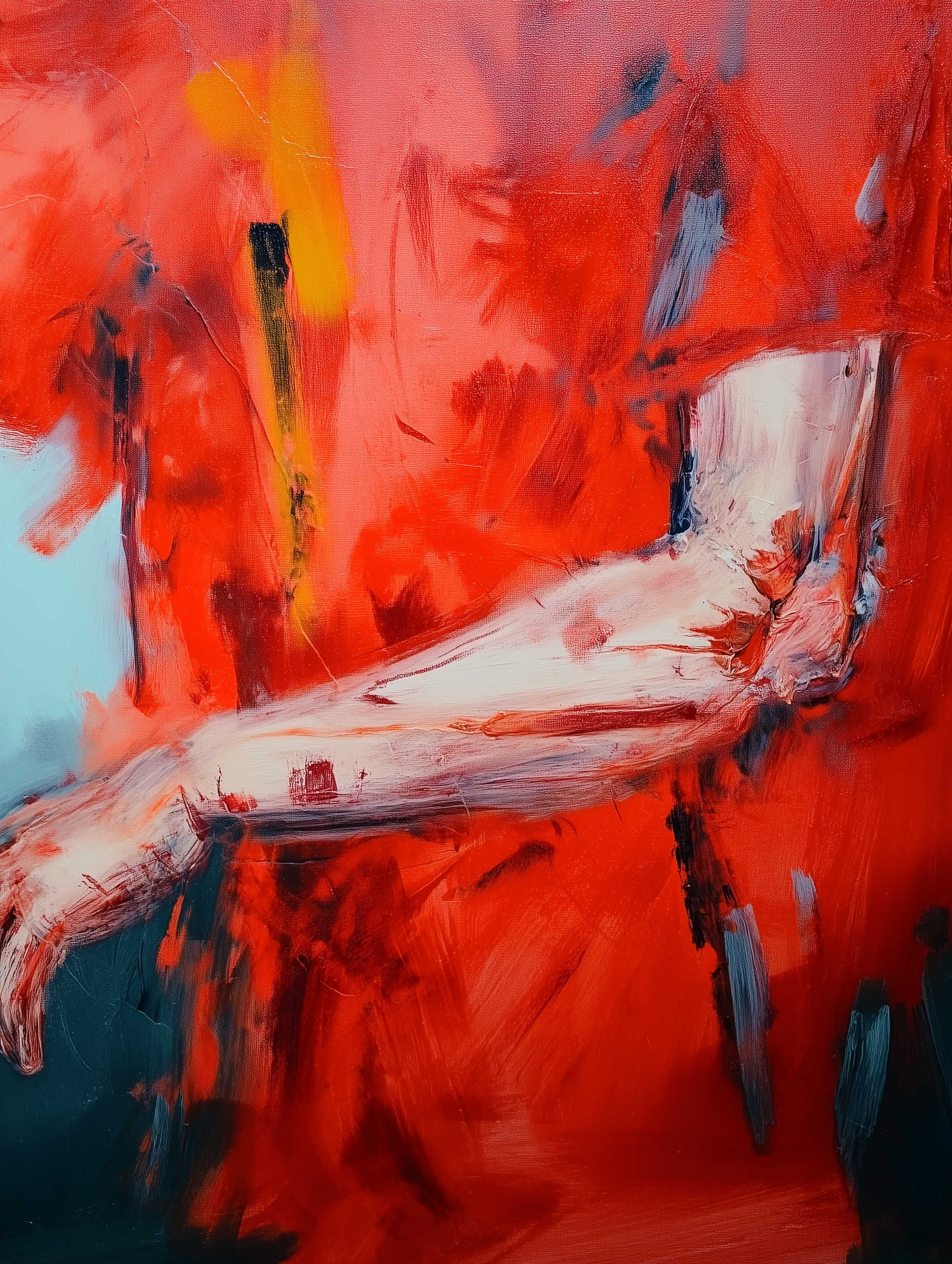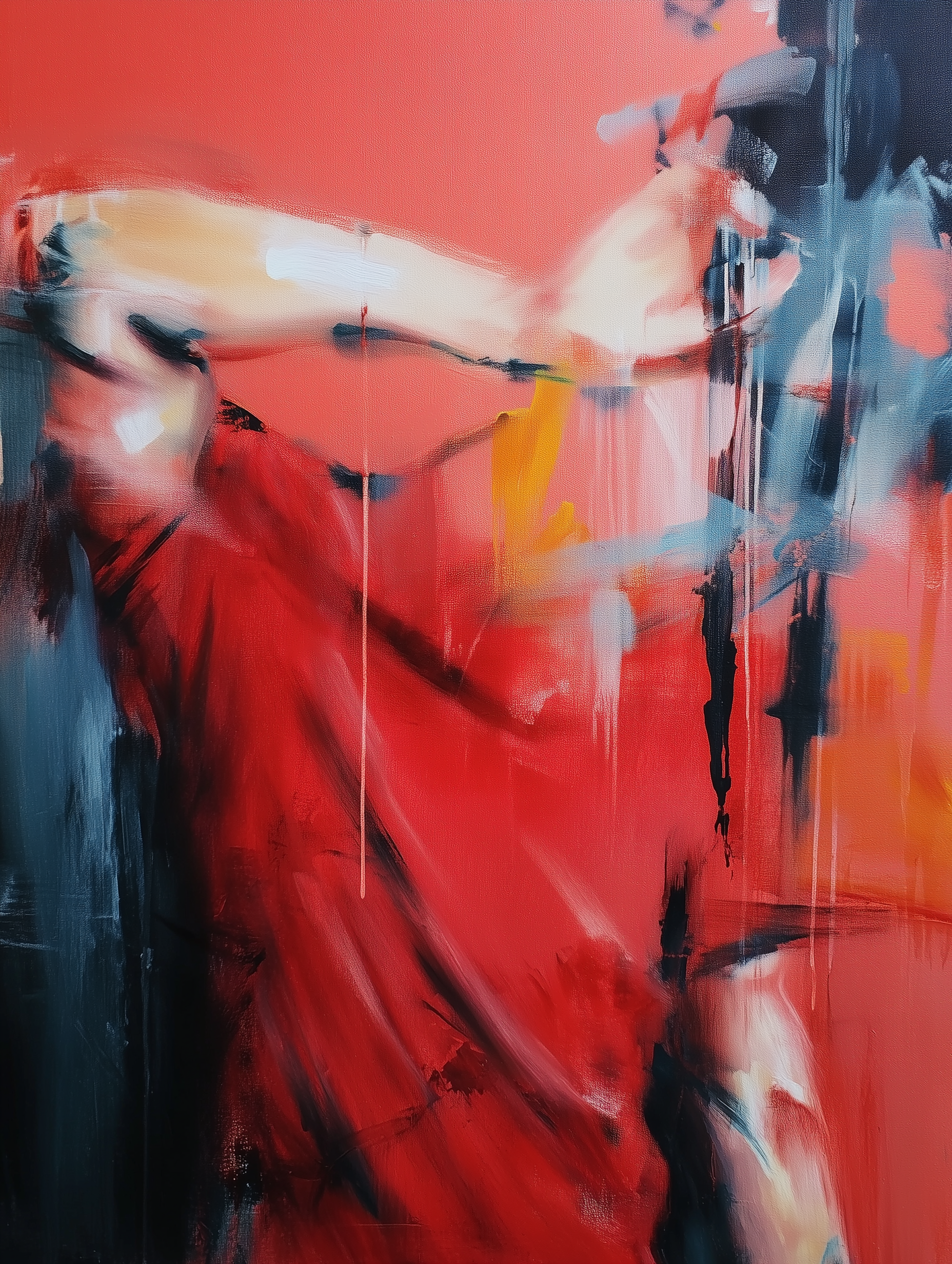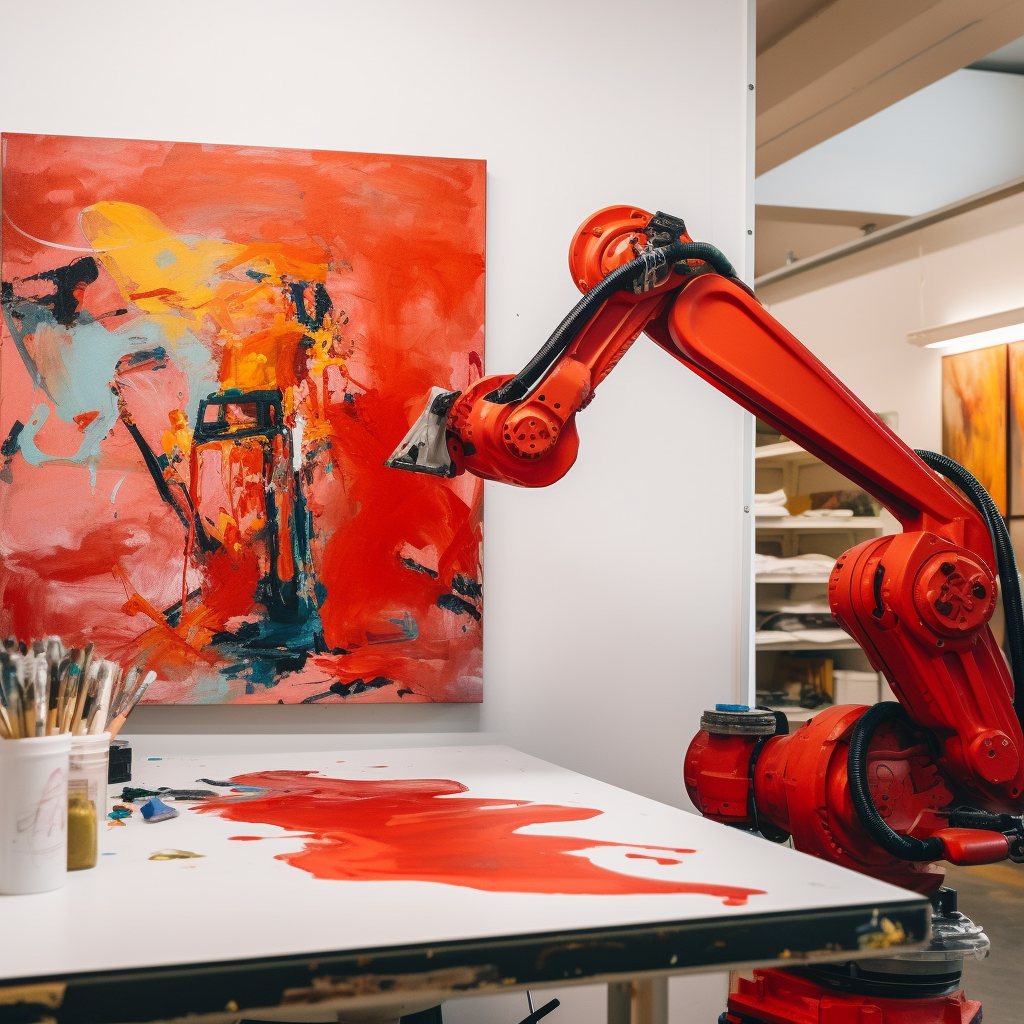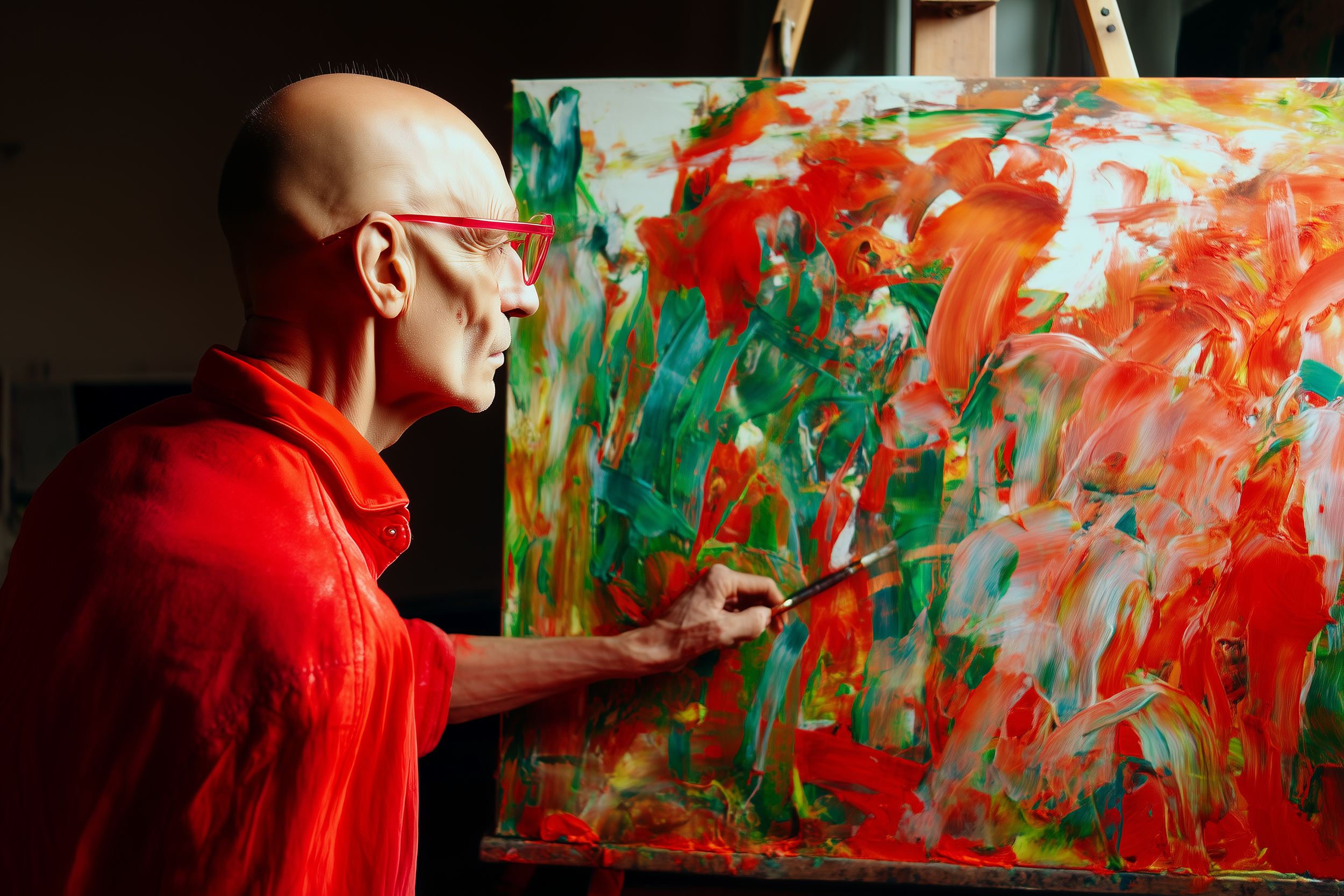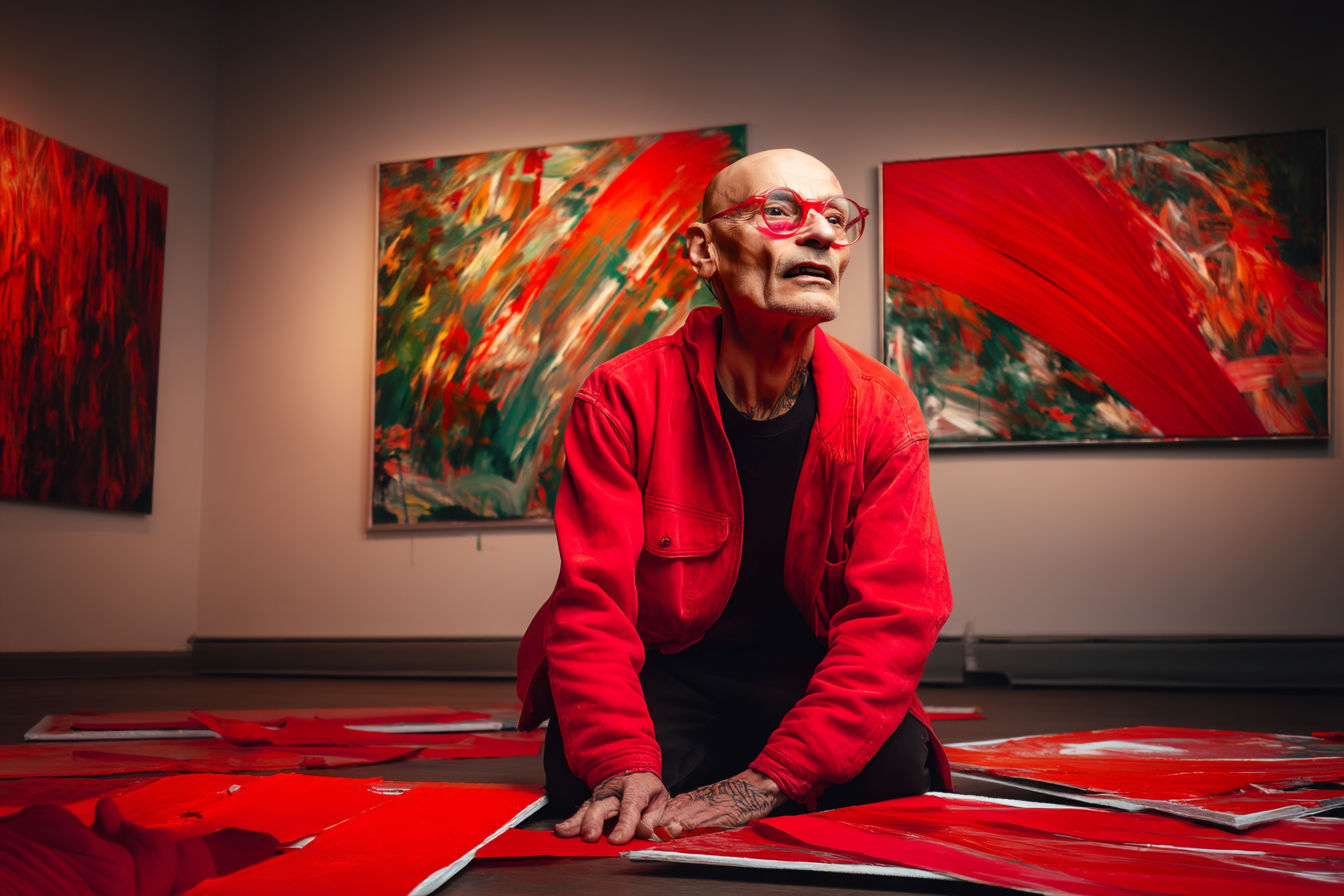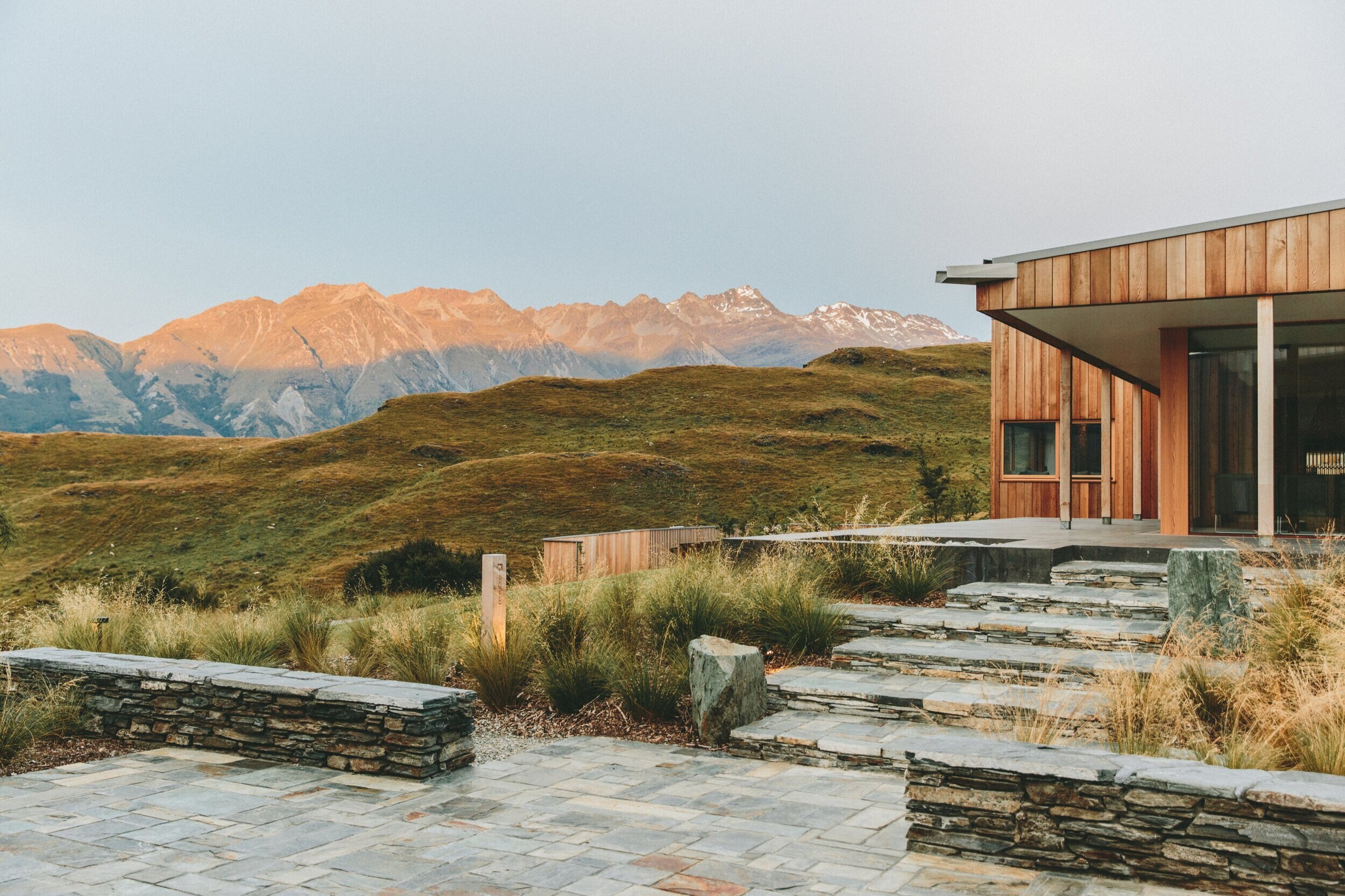david
David Clarke is an American painter whose practice confronts mortality, authorship, and the role of artificial intelligence in extending artistic life beyond death. Featured in EE Journal #4: Art After AI (2023), Clarke has designed a system where his style and gestures are encoded into an AI model and a robotic painter, ensuring his work can continue after he is gone. By planning his own posthumous oeuvre, Clarke challenges the very idea of what it means to “outlive oneself” through art.
clarke
ARTIST STATEMENT
“Painters usually imagine their legacy as archives or retrospectives. I wanted to go further — to design a system that could actually continue my practice after I die. It’s not about creating copies of myself, but about letting my art evolve in a strange afterlife, where the machine becomes both my ghost and my collaborator. For me, Art Beyond the Grave is not only about legacy, but about testing whether creativity itself can be reanimated.”
Art Beyond Grave
Art Beyond Grave
Art Beyond Grave
Art Beyond Grave Art Beyond Grave Art Beyond Grave
hnological futures, situating Indigenous sovereignty inside the aesthetics of advanced science while expoexposing the ethics of AI-driven genomic adaptation.
hnological futures, situaating Indigenous sovereignty inside the aesthetics of advanced science while expoexpo
hnological futures, situaating Indigenous sovereignty inside the aesthetics of advanced science while expoexposing the ethics of AI-driven genomic adaptation.
hnological futures, situaating Indigenous sovereignty inside the aesthetics of advanced science while expoexpo
AI Is Not Indigenous (2022-ONGOING)
AI is not Indigenous is a series of protest signs and performances presented in both public space and gallery contexts. The work revolves around bold hand-painted signs declaring “AI IS NOT INDIGENOUS,” carried during demonstrations and later exhibited as standalone objects. In the exhibition, these signs are accompanied by documentation of the duo’s protests — video footage, photographs, and contextual texts — transforming activism into a layered artistic gesture.
The piece directly challenges AI’s appropriation of Sámi imagery, positioning protest not only as political action but as a contemporary Indigenous art form. It asks: what happens when cultural sovereignty is forced into dialogue with machine vision?
5 questions
David Clarke
1 How did the idea of planning your art after death first come to you?
Art history has always been haunted by the artist’s death. From Vasari’s Lives to Romantic myths of the tortured genius, we are told over and over that the “real” value of an artist is only recognized once they are gone. The market rewards death: scarcity makes a signature precious. I found myself asking — what if I refuse to give the market the closure it wants? What if my work never becomes scarce, because it continues? Art Beyond the Grave was born of that refusal. It is both personal — a way to imagine my own afterlife — and polemical, because it undermines the economics of mourning that the art world thrives on.
2 Do you see the works produced after you’re gone as truly yours, or something else entirely?
They are mine, and not mine — spectral extensions. Walter Benjamin wrote of the “aura” of the work of art; Duchamp flipped that aura into provocation; Warhol industrialized it. I am adding another layer: aura after death, an aura generated by algorithm and machine. The works carry my gestures, my palette, my rhythm, but they will also drift. They are collaborations with a ghost: me-as-dataset. I see them less as “my paintings” and more as children born from my archive, with their own strange independence.
3 What has been the most uncanny moment watching the machine paint “for you”?
The first time the robot executed a brushstroke I recognized — a gesture I had repeated for decades — I felt the shiver of Freud’s Unheimlich. It was my hand, and not my hand. History reminds us that painters have long trained apprentices to copy their style, to continue their workshops — Rubens, Rembrandt, even contemporary studios like Koons. But here the apprentice is tireless, nonhuman, and eternal. That uncanniness is precisely the point: it confronts us with the possibility that style, once codified, no longer needs its author alive.
4 How have collectors and audiences responded to the idea of owning art made posthumously?
With ambivalence — fascination mixed with dread. Some collectors confess they are drawn to the idea of “owning the afterlife,” of participating in a body of work that never ends. Others feel the paintings are tainted, that they lack the sanctity of the artist’s hand. But hasn’t the hand always been mediated? From the camera obscura to photography to digital prints, authenticity is a shifting contract. What troubles audiences is not mediation itself, but the collapse of mortality as the limit of practice. My work asks them to sit with that discomfort: What does it mean if the artist no longer dies in the way the market expects?
5 How do you want people to think about legacy when they encounter Art Beyond the Grave?
Legacy has often been framed as memory: the artist is gone, but the archive remains. I want to reframe it as continuity: the artist is gone, but the practice continues. There is a long history of artists wrestling with death — from Egyptian tomb painters to Basquiat’s myth, from Rauschenberg erasing de Kooning to Warhol’s dream of mechanical immortality. My project stands in that lineage, but pushes further: it makes the artist’s death not the end, but a threshold. When people encounter my work, I want them to ask: what if legacy is not about preservation, but about allowing art itself to have a second, algorithmic life?
prints on sale
A curated selection of prints from Indigenous Genomic Adaptation is available exclusively through the Art After AI pavilion. These works translate elements from Dhunba’s larger installation into collectible editions, allowing fragments of her speculative laboratory to circulate beyond the gallery. Each print carries the same tension at the heart of her practice: Indigenous knowledge meeting algorithmic speculation, resilience entangled with extraction. By acquiring a print, collectors directly support Dhunba’s ongoing research into how AI and bioart can be reframed through Indigenous sovereignty.
